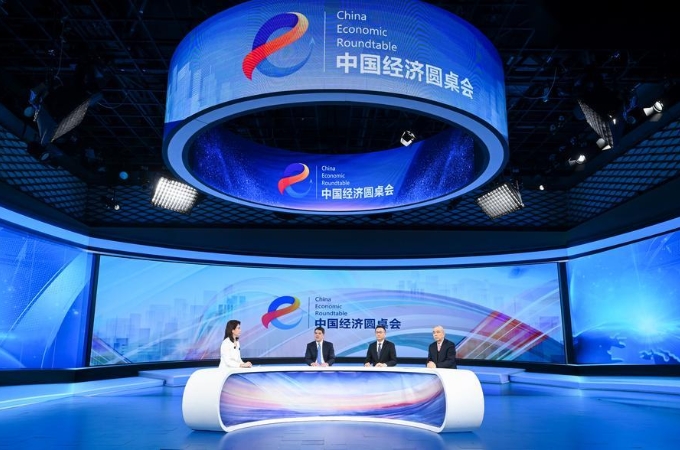Cities adding charging facilities for HK, Macao EVs
Source: China Daily | 2024-12-17 | Editor:Reena
Mainland cities in the Guangdong-Hong Kong-Macao Greater Bay Area are accelerating the construction of charging facilities tailored for Hong Kong and Macao electric vehicles. The move comes as a growing number of private cars from the two special administrative regions are traveling across the boundary under preferential policies.
EV batteries on the Chinese mainland use the national standard, which differs from the European standard used in Hong Kong and Macao. As a result, Hong Kong and Macao EV owners previously had to carry their own adapters or plugs to charge their cars on the mainland — an inconvenient solution with higher usage risks.
"The growing proportion of EVs among Hong Kong and Macao vehicles traveling to and from the mainland has driven up charging demand," said Gu Jun, deputy general manager of the emerging business department at China Southern Power Grid.
In the latest development, two charging piles at a station in Zhongshan, Guangdong province, were put into operation last week.
According to China Southern Power Grid, the constructor of the charging piles, all nine mainland cities in the GBA — Guangzhou, Shenzhen, Zhuhai, Foshan, Huizhou, Dongguan, Zhongshan, Jiangmen and Zhaoqing — now have charging facilities compatible with the European standard, including 100 charging stations and 169 charging piles.
The facilities have been installed on major roads, in popular shopping areas, at innovation and entrepreneurship parks for Hong Kong and Macao entrepreneurs, and in areas frequented by overseas Chinese.
Shenzhen Bus Group has also built 12 European-standard charging piles in Shenzhen, primarily in Futian and Nanshan districts.
Data from Hong Kong's Environmental Protection Department shows that as of the end of October, Hong Kong had around 105,000 EVs, accounting for roughly 11.5 percent of the total number of vehicles.
The share of EVs among newly registered private cars in Hong Kong has risen significantly in recent years, jumping from 6.3 percent in 2019 to 64.6 percent last year.
Charging demand from Hong Kong and Macao EVs on the mainland has surged as more private cars "drive north" for tourism, family visits and business, facilitated by two travel programs.
The Northbound Travel for Hong Kong Vehicles program, introduced on July 1 last year, allows eligible private cars from Hong Kong to travel between the city and Guangdong via the Hong Kong-Zhuhai-Macao Bridge without being subject to regular quotas.
A similar program for Macao vehicles was launched six months earlier.
According to official statistics, single-plate private cars from Hong Kong and Macao made over 2.44 million cross-boundary trips via the Hong Kong-Zhuhai-Macao Bridge this year, accounting for more than 60 percent of the total traffic at the port.
"The construction of charging piles tailored for Hong Kong and Macao vehicles has made traveling to the mainland much more convenient. We no longer have to worry about compatibility issues with charging equipment and can enjoy safer charging services," said Timothy Chui, an EV driver from Hong Kong.
You May Like
-
Services sector continues to expand
China's services sector has remained in expansionary territory for 23 consecutive months, highlighting the resilience and growth potential of the economy during...
InKunming 2024-12-06 -
Marathon craze boosts China's public health, consumption
As temperatures cool, the passion for marathons remains hot. More than 30 marathons and other road-running events were held across China between Nov. 2 and 3 al...
InKunming 2024-12-05 -
UNESCO inscribes Spring Festival on intangible cultural heri...
The United Nations Educational, Scientific and Cultural Organization (UNESCO) on Wednesday inscribed Spring Festival, social practices of the Chinese people in ...
InKunming 2024-12-05 -
Xinhua Headlines: China-Laos Railway boosts growth of region...
Three years since its launch, the China-Laos Railway has handled over 43 million passenger trips and more than 48.3 million tonnes of cargo, with safe operati...
InKunming 2024-12-04 -
Nation's green drive on display at COP16
China will share with the world its experience in sand control over the past 50 years during the 16th session of the Conference of the Parties of the United Nat...
InKunming 2024-12-03 -
Long March 8 prepares for launch at Hainan center
The Hainan International Commercial Aerospace Launch Center in Wenchang, a coastal city in Hainan province, is preparing for its second mission: a launch of the...
InKunming 2024-12-02 -
Single bamboo drifing team from Guangxi shines at the 12th N...
In Sanya, south China's Hainan Province, a group of young people held long poles and stepped on bamboos on the Sanya River, rowing upstream to the finish line...
InKunming 2024-11-29 -
Nation's resolve to remain firm in fighting desertification
Although considerable achievements have already been made in the fight against desertification, China's top forest and grassland management body has pledged to ...
InKunming 2024-11-29 -
China moves to further reduce social logistics costs
China aims to cut the ratio of social logistics costs to GDP to around 13.5 percent by 2027 as the country moves to improve economic efficiency, according to an...
InKunming 2024-11-28 -
Ethnic harmony showcased beyond sports
China's 12th National Traditional Games of Ethnic Minorities is more than just a sports competition; it serves as a vivid expression of the unity and harmony of...
InKunming 2024-11-28







